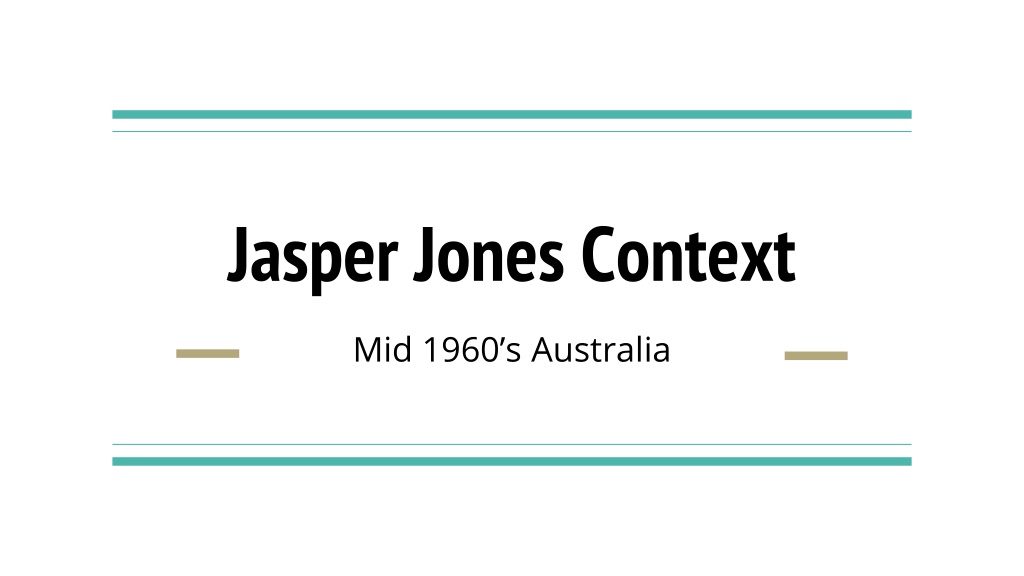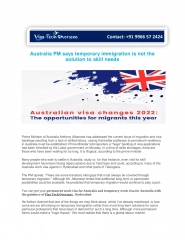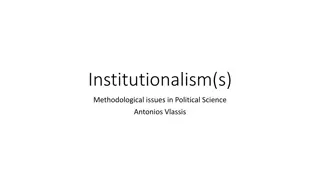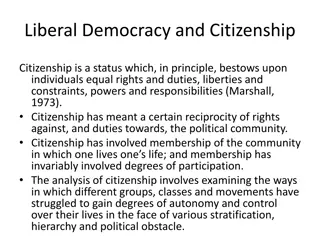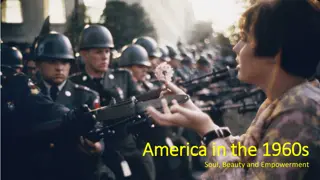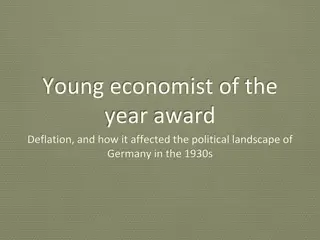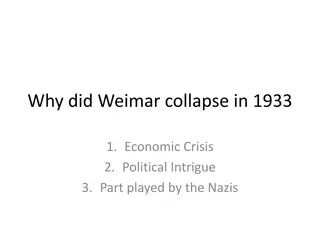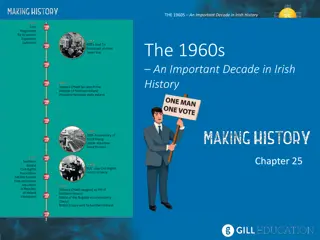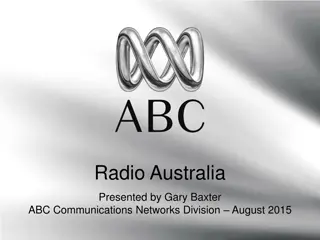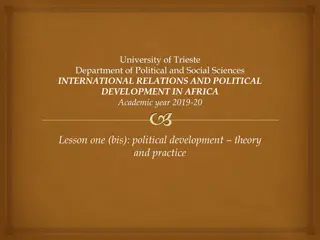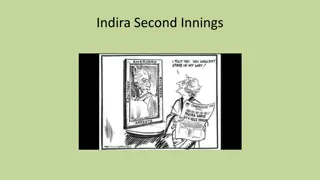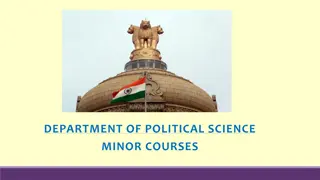Social and Political Turmoil in 1960s Australia: A Snapshot
The 1960s in Australia were marked by significant political and social upheaval. Young people challenged traditional values, women fought for equal rights, and citizens protested against issues like the Vietnam War and racism. The era saw a push for change and reform, with pivotal events such as the Vietnam War, Indigenous rights referendum, and shifts in immigration policies shaping the country's landscape.
Download Presentation

Please find below an Image/Link to download the presentation.
The content on the website is provided AS IS for your information and personal use only. It may not be sold, licensed, or shared on other websites without obtaining consent from the author. Download presentation by click this link. If you encounter any issues during the download, it is possible that the publisher has removed the file from their server.
E N D
Presentation Transcript
Jasper Jones Context Mid 1960 s Australia
The 1960s in context The 1960s were a decade of political and social upheaval in Australia. Young people challenged the traditional values of the time and actively opposed the decisions of the government. Women demanded equal rights and others called for racial equality and environmental issues can to light. Many demonstrated against the Vietnam War, conscription and the nuclear power. These protests, were a reflection of a wider social movement evident in countries such as American and Britian, at the time. The change in communication, via telephone, television, and other technologies meant that these ideas and voices of revolution and change were seen and displayed at a speed never seen before.
The Vietnam War 1962-1975 Served: 49,211 Died: 520 Wounded: 2,396 The Vietnam War War broke out between communist North Vietnam and democratic South Vietnam in 1959. America and her allies, including Australia, sent thousands of troops to Vietnam in an effort to stop the spread of Communism. In total, around 50 000 Australians served in the conflict between 1965 and 1972. Many of them were conscripted, which means their military service was compulsory. Australians became divided over the issue of conscription and whether or not Australia should be involved in the war. Towards the end of the decade, thousands of people demonstrated against the government and some protests became violent. Australian War Memorial: www.awm.gov.au/
Conservative Country Town Many of the changes occurring in the cities, were not mirrored in country Australia. The bigoted and racist views were prominent and those not following a life filled with Christian values were ostracised. These societies were an image of safety, yet they were also acknowledged as a place of fear if you were different.
1967 Referendum Indigenous rights in the 1960s In a 1967 referendum, Australians voted overwhelmingly to recognise Indigenous peoples as citizens and allow them to be counted as part of the Australian population. This result followed a long campaign by both Indigenous and non-Indigenous Australians, who demanded better rights for Indigenous people and highlighted the poor conditions in which many lived. Australian War Memorial: https://www.awm.gov.au/
Racism 1960s The White Australia policy Australia's population increased throughout the decade, as European and British migrants continued to arrive. The late 1960s also saw changes to the White Australia Policy, which permitted a small number of skilled Asian migrants to settle in Australia.
To Kill a Mockingbird A classic novel written in 1960 by Harper Lee. This novel is narrated by a 10 year old girl, Scout, who describes her life in the deep south in the town of Maycomb, during the Depression. The novel reflects on each character and the significant social, cultural and political issues of the time. This is a significant allusion in the play.
Huckleberry Finn Written by Mark Twain in 1884. It is about a young boy s adventures down the Mississippi River. Alluded to in Jasper Jones, by Charlie. Many parallels can be seen between Charlie and Huck.
Breakfast at Tiffanys A novella written by Truman Capote. First published in 1958. In autumn 1943, the unnamed narrator befriends Holly Golightly. The two are tenants in a brownstone apartment in Manhattan's Upper East Side. Holly (age 18 19) is a country girl turned New York caf society girl. As such, she has no job and lives by socializing with wealthy men, who take her to clubs and restaurants, and give her money and expensive presents; she hopes to marry one of them. Holly likes to shock people with carefully selected tidbits from her personal life or her outspoken viewpoints on various topics. Over the course of a year, she slowly reveals herself to the narrator, who finds himself fascinated by her curious lifestyle. Breakfast at Tiffany s: https://en.wikipedia.org/wiki/Breakfast_at_Tiffany%27s_(novella)
Comics Superman Batman The allusions to heroes and their impact on adolescent boys
